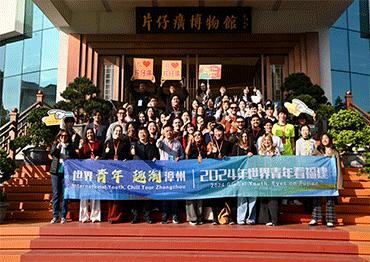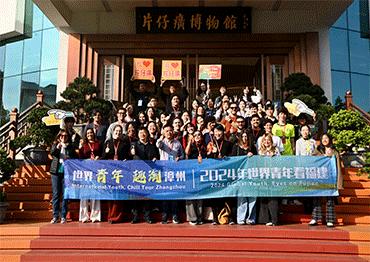During the late Ming Dynasty (1368-1644), a royal physician fled to Zhangzhou, escaping the tyranny of the imperial court and bringing with him the secret formula for Pien Tze Huang. He took refuge at Pushan Yan Temple, where he became a monk.
Using the imperial recipe and precious Chinese medicinal materials such as musk, cattle gallstones, pseudoginseng and snake bile, he developed pills for treating swelling and “heat-related” toxins. Heat is a TCM concept that involves symptoms such as increased body temperature, feeling feverish, having dry mouth or sore throat. These pills, used for both internal and external applications, earned the reputation of a “Buddhist holy medicine.”
Before his death, the monk entrusted the secret formula to the temple’s abbot, instructing that it be passed down only within the temple.
Pien Tze Huang became known as a “treasure of the temple.”
However, as the temple declined in the late Qing Dynasty (1644-1911) and early Republican period (1911-1949), the last abbot left the monastic life. He began producing and selling the medicine at a tea shop outside Zhangzhou’s east gate, bringing Pien Tze Huang to the wider public. Its therapeutic effects earned it great respect among locals, who called it a “treasure to protect the home.” It became customary in southern Fujian to gift Pien Tze Huang to elders and relatives during visits.
After the founding of the People’s Republic of China in 1949, Pien Tze Huang was incorporated into the Zhangzhou Pharmaceutical Factory for exclusive production and sale. The factory later evolved into today’s Zhangzhou Pien Tze Huang Pharmaceutical Co., Ltd.
The name “Pien Tze Huang” reflects its purpose: In the Minnan dialect, “Pien” means a small piece, “Tze” is a colloquial particle and “Huang” refers to heat toxins, swelling and pain, which align with inflammation in Western medicine. As one of the first China Time-Honored Brands, it is often referred to as one of the “Three Treasures of Fujian,” alongside Shoushan stone and oolong tea.
The effects of its main ingredients are well-documented. Cattle gallstones clear the heart, loosen phlegm and detoxify, while musk opens the sinuses, refreshes the mind, activates blood circulation and reduces swelling and pain. Snake bile relieves “heat,” detoxifies, and benefits the liver and gallbladder, while pseudoginseng promotes blood circulation, stops bleeding and alleviates swelling and pain. Together, these ingredients enable Pien Tze Huang to clear heat, detoxify and alleviate swelling and pain.
Pien Tze Huang is a national key protected TCM formulation. In 1992, the National Administration of Traditional Chinese Medicine classified its specific formula and preparation process as a “National Secret Formula” with permanent confidentiality. Only two TCM formulations in China hold this designation: Pien Tze Huang and Yunnan Baiyao. Furthermore, Pien Tze Huang’s manufacturing process and formula are permanently classified as secrets.
The raw materials for Pien Tze Huang are rare and expensive. Natural musk, allocated to only a select few Chinese medicine companies, is especially precious, as are cattle gallstones. In 2005, the National Forestry and Grassland Administration authorized Zhangzhou Pien Tze Huang Pharmaceutical to use natural musk, making it one of the first pharmaceutical companies to receive this approval. Since then, each pill has been marked with a unique identification number bearing the “Special Identification for Wildlife Management and Utilization in China.”
Pien Tze Huang has long been recognized internationally, particularly in Southeast Asia. During the Qing Dynasty, travelers from Fujian and Guangdong provinces brought it along to maintain their health. The Maritime Silk Road, which originated in Zhangzhou, connected nearly 50 countries and regions, facilitating the export of Pien Tze Huang to 19 of these destinations. The medicine remains highly esteemed in overseas Chinese communities.
Its reputation grew during the Vietnam War, when its efficacy in treating gunshot and knife wounds, festering sores and insect stings drew attention. The US military reportedly purchased significant quantities for soldiers, further boosting its profile in Western countries.
In 1972, following the restoration of diplomatic relations between China and Japan, Pien Tze Huang was presented to Japanese Prime Minister Kakuei Tanaka as a national gift, sparking widespread interest in Japan. Since then, Japanese citizens often traveled to Hong Kong to purchase it, leading to long queues and high demand.
In 1988, during an acute hepatitis A outbreak in Shanghai, Pien Tze Huang gained widespread acclaim for its fast-acting and effective treatment, making it highly sought after. It was also included in the National Administration of Traditional Chinese Medicine’s recommended list for Ebola treatment in 2014 and listed in the National Health Commission’s updated dengue fever treatment guidelines that same year. In 2015, the National Medical Products Administration classified it as a classic formulation for treating tumors.
With its rare ingredients, remarkable efficacy and legacy, Pien Tze Huang has achieved legendary status. However, it should only be used under the guidance of qualified medical professionals to ensure proper dosage and effectiveness. Its use remains most prevalent in regions like Fujian, Guangdong, Hong Kong and Southeast Asia, where the hot and humid climate aligns with its intended applications.

 Old Version
Old Version
